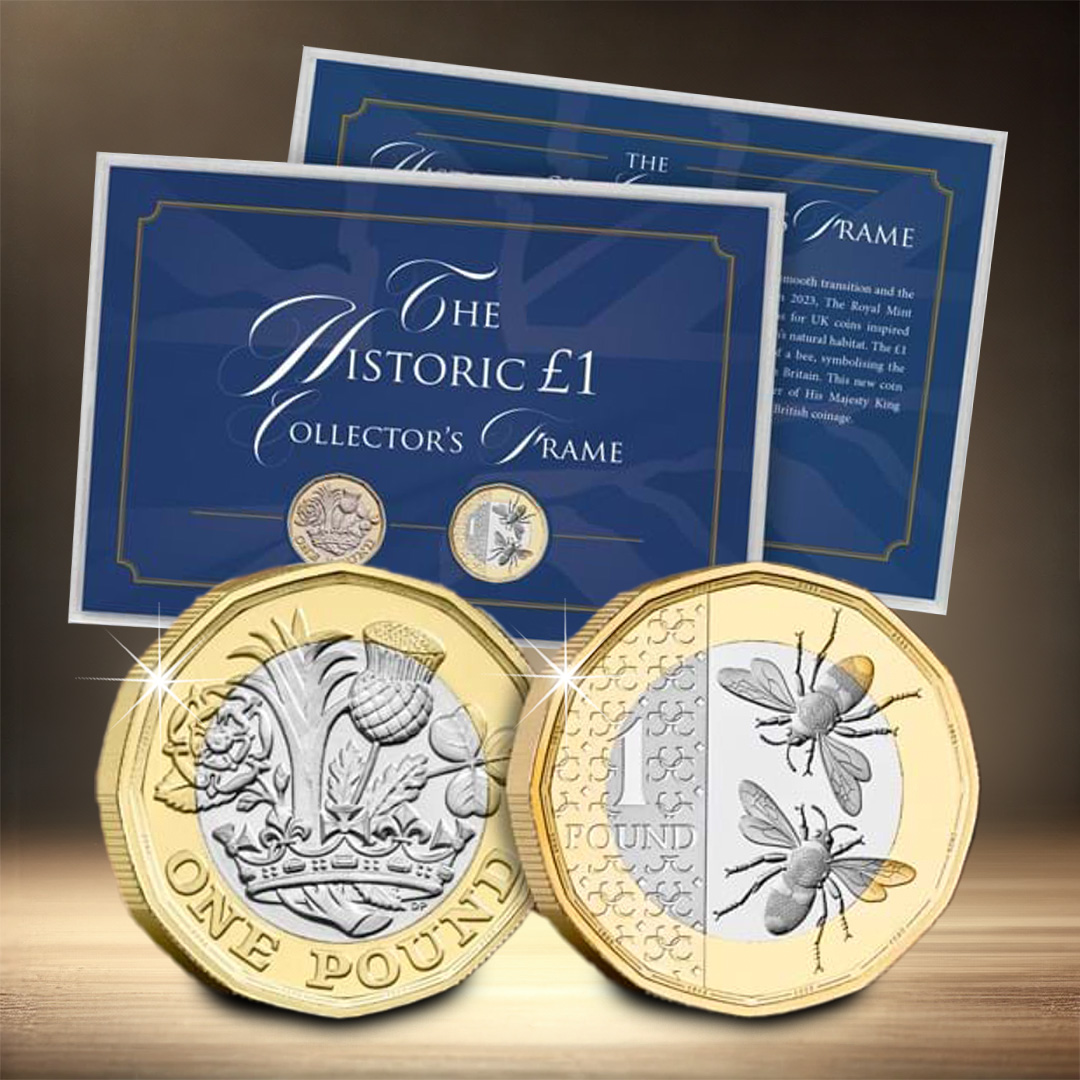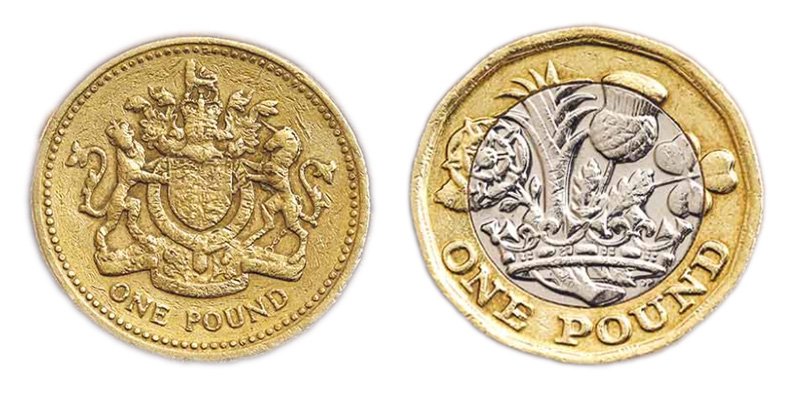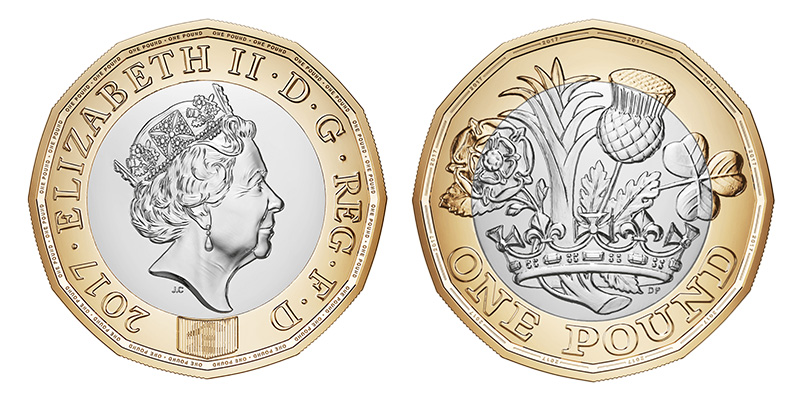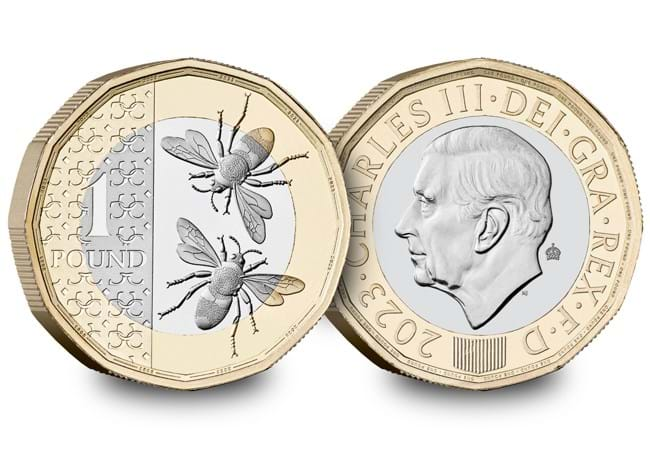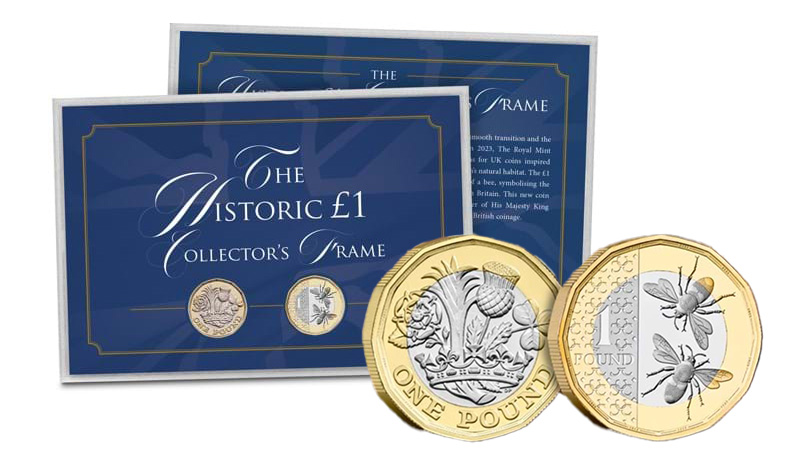Her Majesty the Queen
Rarest £2 Coins in the UK
What are the Rarest UK £2 Coins in circulation? Find out if you have any below.
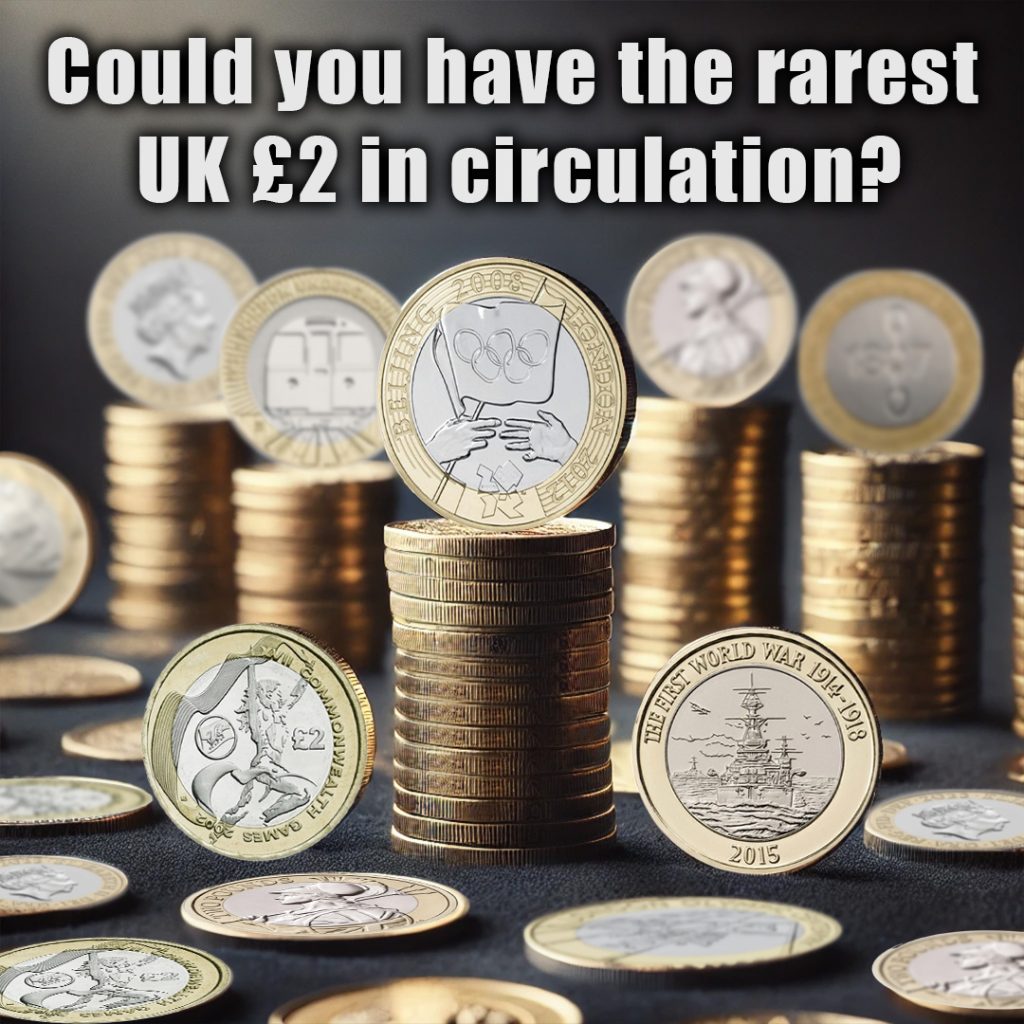
For over 25 years, the UK £2 coin has been a symbol of national pride and history, quietly circulating among us and occasionally surprising collectors with its rarity. Let us guide you through some of the rarest £2 coins ever produced for UK circulation.
1. Commonwealth Games, Northern Ireland 2002
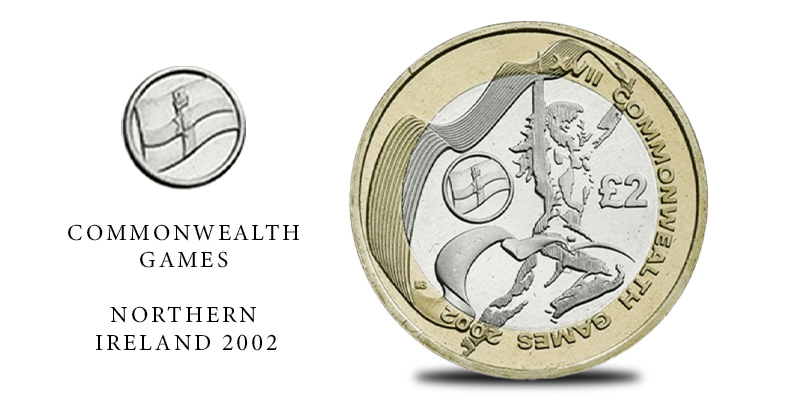
Mintage: 485,500
The rarest £2 coin in circulation, this gem is a tribute to the 2002 Commonwealth Games. It features the Ulster Banner with a victorious figure, making it a must-have for collectors. Its extremely low mintage of just 485,500 cements its position as the ultimate treasure in UK £2 coinage.
2. Commonwealth Games, Wales 2002
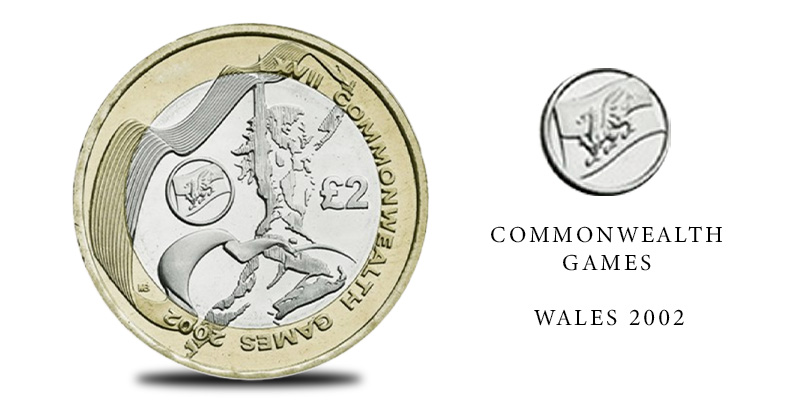
Mintage: 588,500
This rare £2 coin celebrates the achievements of Welsh athletes during the 2002 Commonwealth Games. Featuring the Welsh flag alongside a figure in motion, it’s a standout piece in the Commonwealth series and a prized find for collectors.
3. WW1 Royal Navy Fifth Portrait 2015
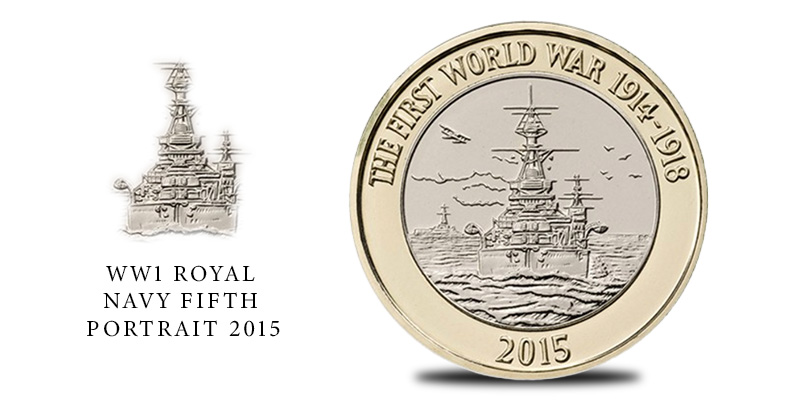
Mintage: 650,000
Honouring the Royal Navy’s role in the First World War, David Rowlands’ depiction of HMS Royal Oak is both powerful and poignant. The edge inscription, “THE SURE SHIELD OF BRITAIN,” reinforces the coin’s tribute to national resilience. Featuring the fifth and final definitive coinage portrait of Queen Elizabeth II, this rare £2 coin is steeped in historical significance.
4. Britannia Fifth Portrait 2015
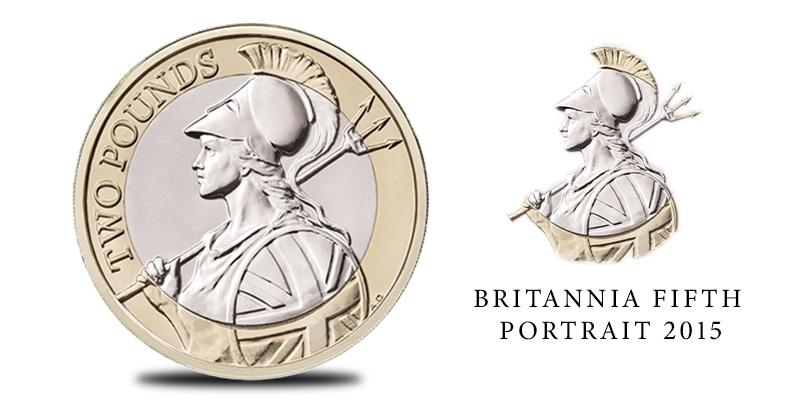
Mintage: 650,000
A modern take on an age-old symbol, Antony Dufort’s design brings Britannia back to UK circulation after a long absence. Replacing the Technology design that had graced £2 coins since 1997, this £2 release became an instant collector’s favourite, blending tradition with modern artistry.
5. Commonwealth Games, England 2002
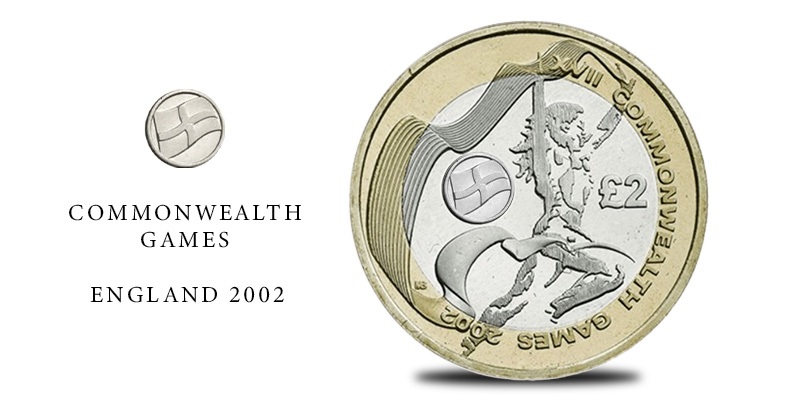
Mintage: 650,000
The England edition of the 2002 Commonwealth Games coin features St. George’s Cross alongside a dynamic figure in motion. Matthew Bonaccorsi’s design embodies national pride, and its limited mintage ensures its status as a cherished piece among collectors.
6. Commonwealth Games, Scotland 2002
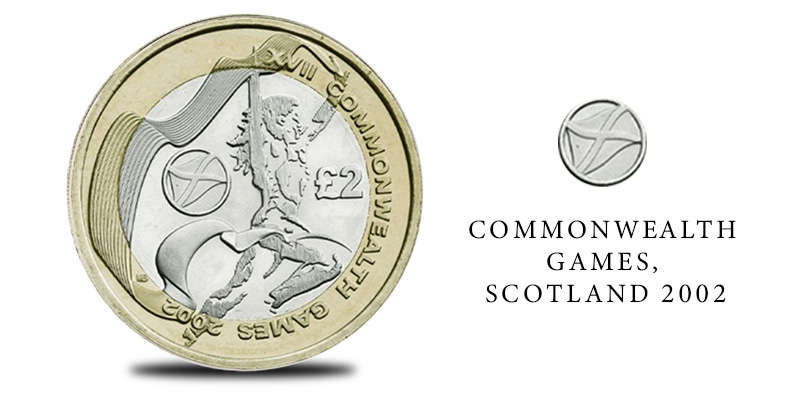
Mintage: 771,750
The 2002 Commonwealth Games in Manchester were a milestone for UK sports. The Scotland edition of this commemorative coin series, designed by Matthew Bonaccorsi, features a vibrant figure holding a banner, symbolising celebration and unity. The edge inscription, “SPIRIT OF FRIENDSHIP, MANCHESTER 2002,” perfectly captures the event’s camaraderie.
7. Olympic Games Handover 2012
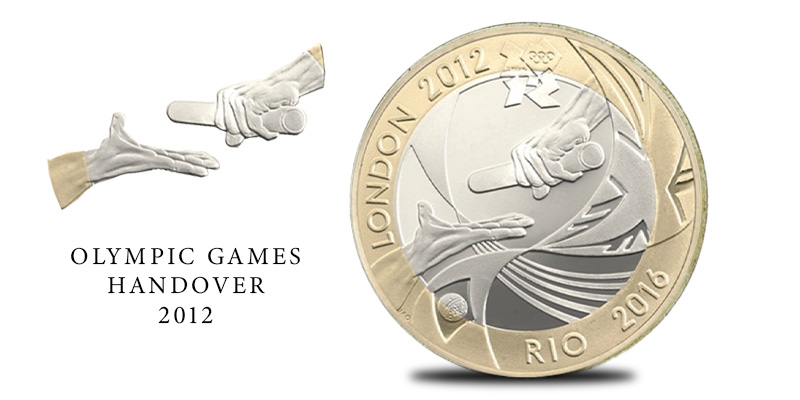
Mintage: 845,000
This coin commemorates the handover of the Olympic Games from London to Rio de Janeiro. Designed by Jonathan Olliffe, it features the passing of a baton between two hands, framed by the flags of the UK and Brazil. The edge inscription, “I CALL UPON THE YOUTH OF THE WORLD,” echoes the global spirit of the Olympics.
8. Olympic Games 2008
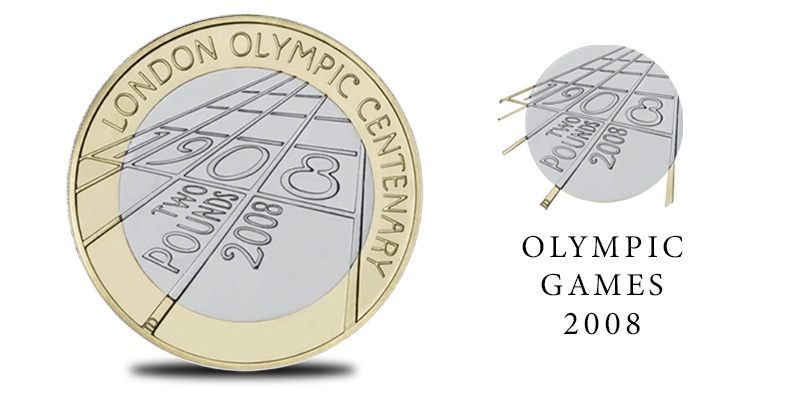
Mintage: 910,000
Celebrating the centenary of the 1908 London Olympics, this coin showcases a striking running track design by Thomas T. Docherty. With the years 1908 and 2008 integrated into the design and the edge inscription reading “THE 4TH OLYMPIAD LONDON,” it’s a dynamic tribute to the enduring legacy of the Olympic Games.
9. Olympic Games Handover 2008
Mintage: 918,000
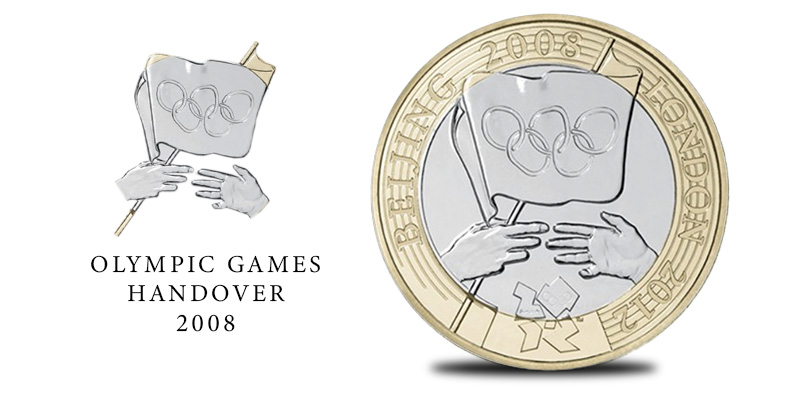
Designed by Thomas T. Docherty, this coin captures the symbolic passing of the Olympic flag, marking the transition from Beijing 2008 to London 2012. The reverse design features hands exchanging the flag, with the years boldly displayed. Encircling the edge is the inspiring inscription, “I CALL UPON THE YOUTH OF THE WORLD,” emphasising the unity and potential of the games.
Have you got one of the coins featured above?
Each of these £2 coins represents a unique story, from sporting milestones to national symbols, making them more than just currency—they are pieces of history in your pocket. Keep an eye on your change; you never know when you might uncover one of these hidden treasures!
Rare UK £1 coin pair: The 2017 Nations of the Crown and 2023 Bee £1 Coins
The British £1 coin has always been a symbol of resilience and innovation, and today, you can celebrate its rich 500-year history with a remarkable collectible: The British Pound Coin Collector’s Frame. Featuring the brand-new King Charles III “Bee” £1 coin alongside the 2017 “Nations of the Crown” £1 coin, this exclusive pairing honours two of the most significant transformations in the denomination’s history.

The Evolution of the £1 Coin
The journey of Britain’s £1 coin has been nothing short of revolutionary. Introduced in 1983 to replace the £1 note, it became an essential part of everyday life. However, by the early 21st century, the “round pound” faced a growing challenge: counterfeiting. It was estimated that one in 30 £1 coins in circulation was fake, prompting the need for a more secure solution.
Enter the 12-sided £1 coin, introduced on 28th March 2017. Dubbed the “most secure coin in circulation,” it featured:
- Micro-lettering along the rim for added security.
- A hologram that cleverly switches between a ‘£’ symbol and the number ‘1’ when tilted.
- A groundbreaking bi-metallic design, making it harder to replicate.
The transition from the round pound to the 12-sided coin was a monumental moment, marking a new chapter for Britain’s currency.
The Arrival of the King Charles III “Bee” £1 Coin
In 2023, history was made once again as The Royal Mint unveiled the first £1 coin featuring the effigy of King Charles III. For the first time in over 70 years, the obverse design of the £1 changed, symbolizing the start of a new royal era. What makes this coin even more special is its reverse design, celebrating the industrious honeybee, a vital emblem of British wildlife and a nod to environmental conservation.
The King Charles III “Bee” £1 coin has quickly become a sought-after piece among collectors, representing not only a new reign but also a fresh perspective on what Britain’s coinage can embody.
A Frame Worthy of History
The British Pound Coin Collector’s Frame brings these two iconic coins together in a pristine presentation. Carefully curated to highlight their beauty and significance, this collector’s item serves as a tribute to the £1 coin’s enduring legacy and innovative spirit.

Price £25.00 (+ £3.99 p&p)
With the 2017 Nations of the Crown £1 representing the dawn of unparalleled security and the 2023 King Charles III Bee £1 symbolising a new royal chapter, this pairing encapsulates the evolution of one of Britain’s most iconic denominations.
Secure Your Collector’s Frame Today
The British Pound Coin Collector’s Frame is an unmissable opportunity. Secure your set today and own a tangible piece of Britain’s monetary history—a celebration of tradition, innovation, and the changing times.
UK’s Rarest 50p Coins
If you’ve landed here, chances are you’re wondering if that 50p rattling around in your wallet could be one of the rarest 50p coins in the UK. And you might be right!

The 50p coin isn’t just a masterpiece of design—its unique heptagonal shape has been a canvas for celebrating Britain’s history, culture, and achievements since 1969. But among the countless coins in circulation, a few rare gems have captured the imagination of collectors everywhere.
Could your 50p be one of these sought-after treasures? From iconic designs to mintage mysteries, find out what makes certain 50p coins worth far more than their face value.
Let’s dive into the ten rarest 50p coins in UK circulation today, how many have been struck, and what makes them so special.
1. Atlantic Salmon 50p (2023)
Mintage: 200,000
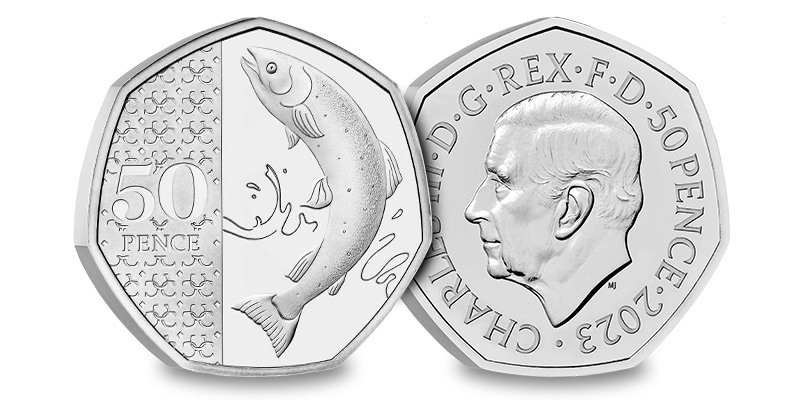
As one of the newest coins on this list, the Atlantic Salmon 50p holds the crown as the rarest 50p in circulation. Released in November 2023, it’s part of the first definitive coin set featuring King Charles III. Highlighting conservation efforts, this design celebrates the majestic Atlantic salmon, which faces threats like habitat loss and climate change. With its mintage lower than even the iconic Kew Gardens 50p, this coin has quickly become a collector’s dream.
You can own the 2023 Atlantic Salmon BU 50p as part of the 2023 Official BU Presentation Pack! Click buy now to secure your set.
2. Kew Gardens 50p (2009)
Mintage: 210,000
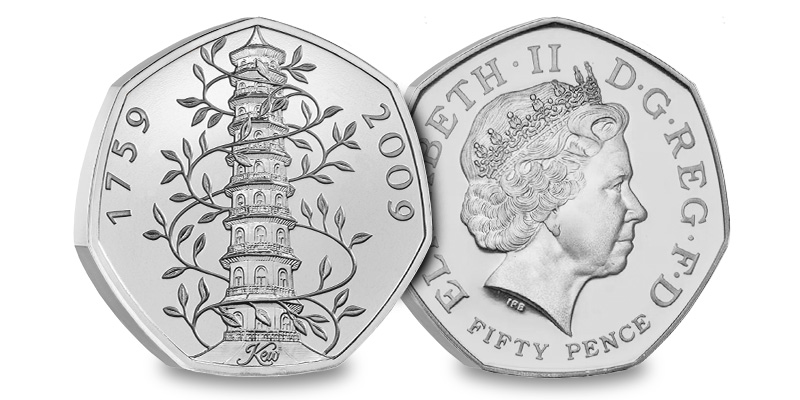
The legendary Kew Gardens 50p reigned as the rarest circulating coin for over a decade. Its intricate design by Christopher Le Brun features the iconic Chinese pagoda, encircled by climbing vines. This coin’s rarity stems from the low demand for 50p coins in 2009, leading to an exceptionally small mintage. Its value among collectors is unparalleled, with some selling for as much as £700 today. While a 2019 reissue exists, it’s the original 2009 edition that remains the most sought after.
3. Olympic Football 50p (2011)
Mintage: 1,125,500
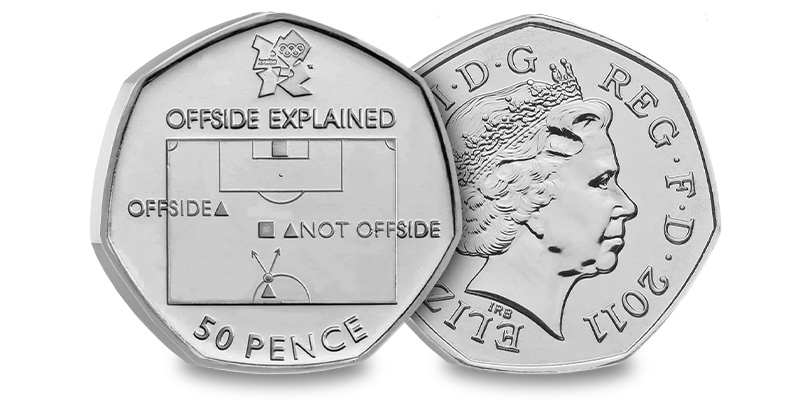
This coin from the London 2012 Olympics collection offers a playful twist on a classic sport. Designed by sports journalist Neil Wolfson, its reverse explains the notoriously tricky “offside rule” using a football tactics board. With only 1,125,500 minted, this coin is not only a collector’s item but a quirky keepsake for football fans.
4. Olympic Wrestling 50p (2011)
Mintage: 1,129,500
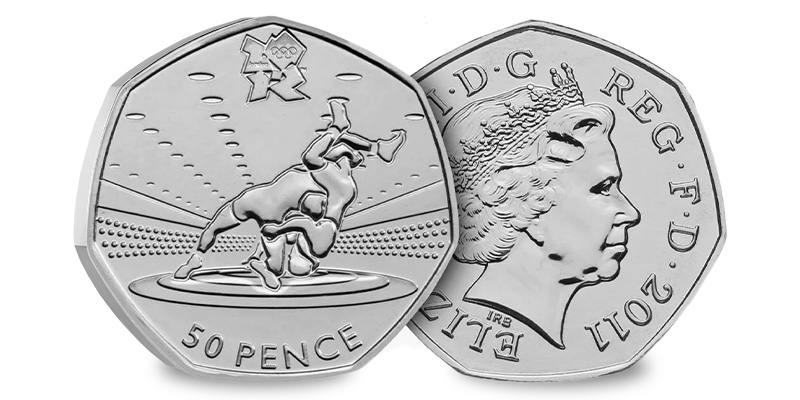
London 2012 Olympics collection – 2011 Olympic Wrestling 50p
Another standout from the Olympic 50p series, this coin celebrates the ancient sport of wrestling. Designed by Roderick Enriquez, the dynamic image captures a wrestler mid-throw against a futuristic stadium backdrop. Its low mintage and unique depiction of a historic sport make it a prized piece for collectors.
5. Olympic Judo 50p (2011)
Mintage: 1,161,500
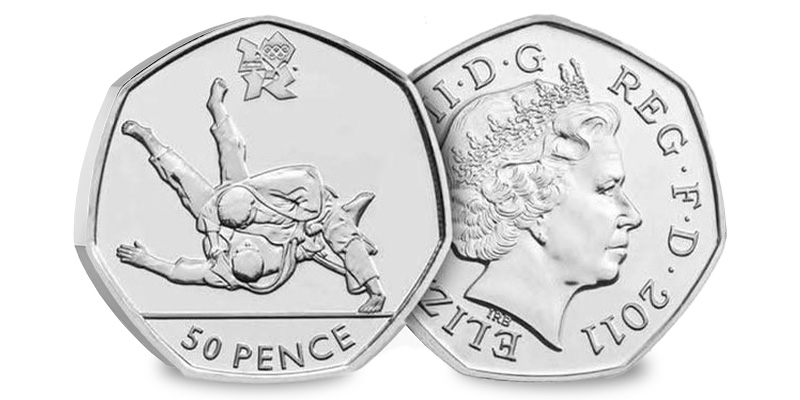
Judo, a sport of precision and power, takes centre stage on this Olympic coin. Designed by David Cornell, it depicts two athletes locked in a dramatic throw, with intricate details that showcase their flowing uniforms and dynamic movement. With its low mintage, this coin is as competitive to find as the sport it represents.
6. Olympic Triathlon 50p (2011)
Mintage: 1,163,500
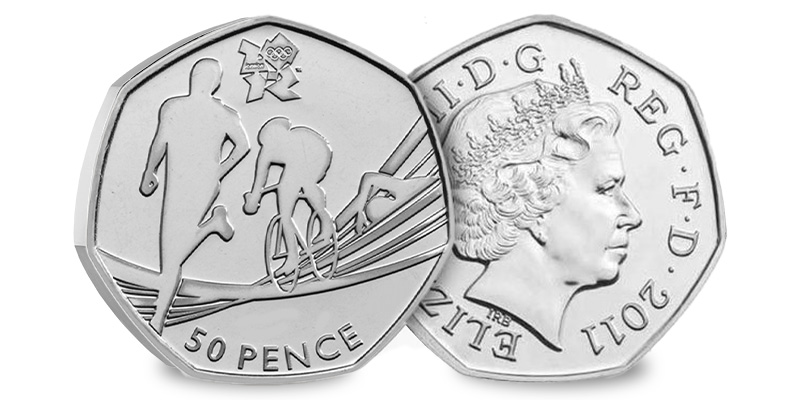
Designed by Sarah Harvey, this coin captures the endurance and determination of triathletes, with representations of swimming, cycling, and running seamlessly integrated into one striking design. The sweeping lines give a sense of motion, making this coin a fitting tribute to one of the toughest Olympic sports.
7. Peter Rabbit 50p (2018)
Mintage: 1,400,000
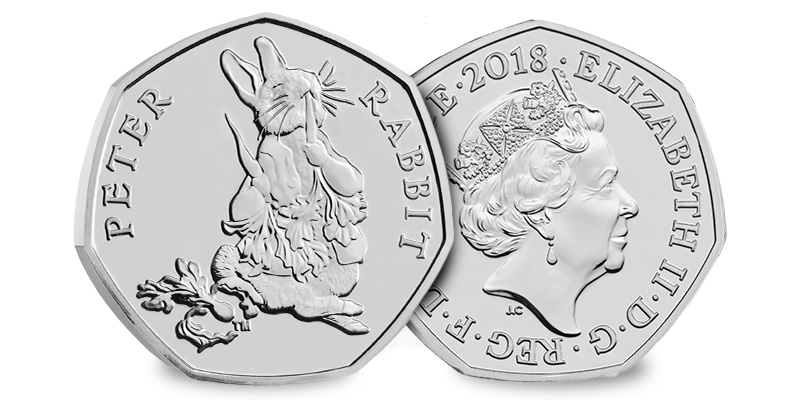
Beatrix Potter’s beloved character, Peter Rabbit, has charmed collectors and fans alike. Designed by Emma Noble, this coin shows Peter munching on radishes, bringing his mischievous personality to life. As one of the rarer coins in the Beatrix Potter collection, it’s a cherished addition to any collection.
8. Flopsy Bunny 50p (2018)
Mintage: 1,400,000
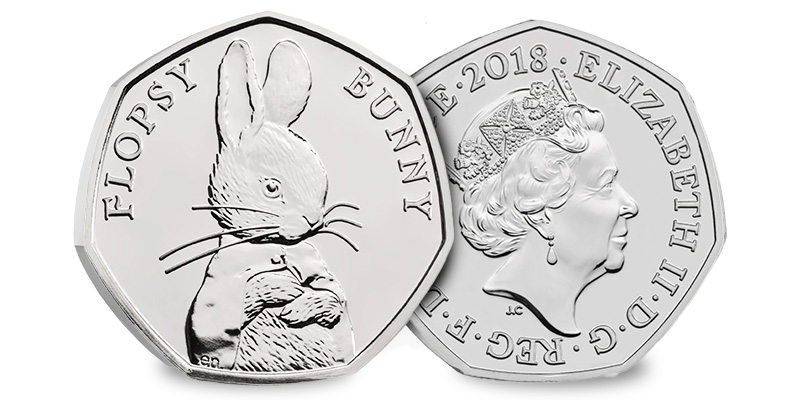
Flopsy Bunny, Peter Rabbit’s sister, made her debut on UK coinage in this delightful design by Emma Noble. Her distinctive cape and whimsical charm capture the essence of Beatrix Potter’s illustrations. With the same mintage as her brother, Flopsy Bunny is equally elusive in circulation.
9. Olympic Tennis 50p (2011)
Mintage: 1,454,000
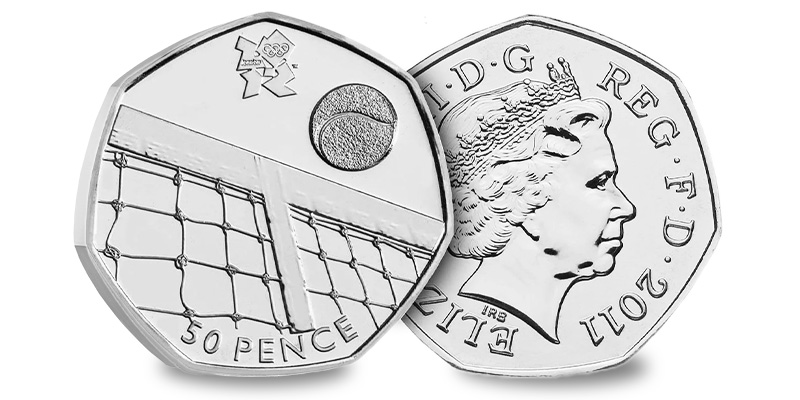
This coin gained prominence after Andy Murray’s historic Olympic gold medal win in 2012. Designed by Tracey Baines, it features a simple yet elegant depiction of a tennis ball flying over a net, symbolising the grace and power of the sport. With its low mintage, it remains a treasured piece of Olympic memorabilia.
10. Olympic Goalball 50p (2011)
Mintage: 1,615,500
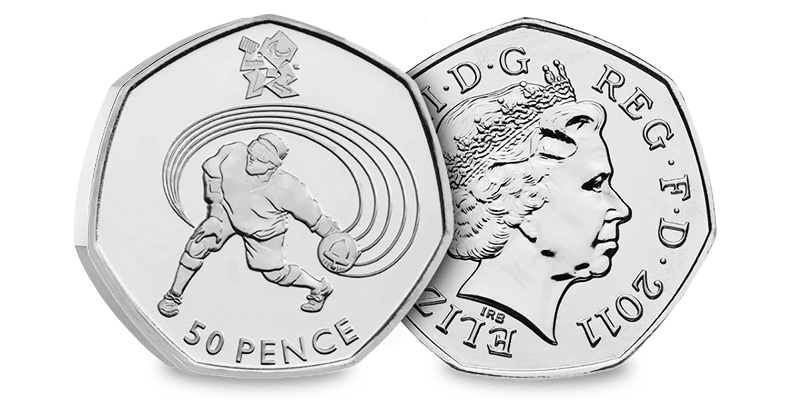
Designed by Jonathan Wren, this coin celebrates goalball, a Paralympic sport that combines skill and strategy. Its striking design shows an athlete mid-throw, highlighting the dynamism of the sport. Though its mintage is higher than others on this list, its rarity in circulation still makes it a valuable find.
The 2011 Olympic Goalball 50p is available to own by clicking here.
Have You Got Any of These Rare 50p Coins?
If so, that’s incredible! Owning one of these sought-after coins is a real achievement for any collector. But the journey doesn’t have to end there—why not take it further?
You can explore a wide range of 50p coins, including some of the rarest and most iconic designs, at westminstercollection.com. Whether you’re looking for uncirculated, silver, or gold specifications, we’ve got something for every collector.
Start your next collecting adventure today and see if you can add even more of these fascinating coins to your collection!

